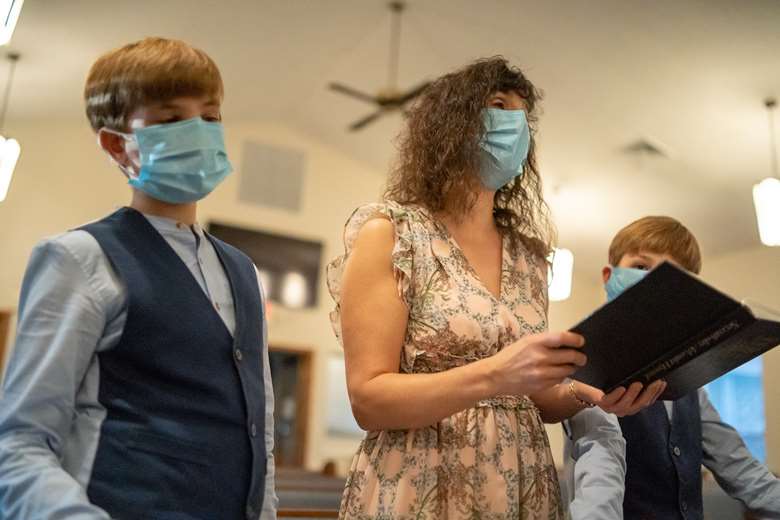Is singing safe?
Susan Nickalls
Wednesday, October 28, 2020
‘We were able to demonstrate that singing is not colossally more dangerous than speaking or shouting’

If someone had told Declan Costello back in February that a few months later he would be spending time in an orthopaedic operating theatre watching singers blowing into cones, he would have thought they were mad. But given the bad press singing and choirs, especially amateur ones, were getting early on in lockdown, the consultant ENT specialist in throat disorders felt he had to do something to change the narrative around COVID-19 and singing to introduce some objectivity.
As a former choral scholar at St John’s College Cambridge where he studied music, Costello was well placed to join forces with Jonathan Reid, Professor of Physical Chemistry at the University of Bristol to carry out the research. Funded by the Department of Culture Media and Sport (DCMS), the PERFORM report looked into the amount of aerosol and droplets produced by a variety of vocal activities including speaking, breathing, shouting and singing. This research led to the DCMS changing some of their guidelines in August to allow performances in some regions of the UK to go ahead under certain conditions. Although Costello says their research is only one piece of the jigsaw, he’s delighted that it has played a part in opening up the arts.

‘We were able to demonstrate that singing is not colossally more dangerous than speaking or shouting. And although we’ve still to fully analyse and publish data relating to the difference between amateur and professional singers, eyeballing the results I’d be surprised if there’s any difference. How professionals produce their voices in relation to breath support and flow might be slightly different but other factors are more important. We were struck by the extent to which volume makes such a huge difference. A loud voice produces 20 – 30 times more aerosol than a quiet voice.’
The research also found that size was not an issue for singers, with no correlation between body mass index and the amount of aerosol produced, and little difference between genders, ethnicities and the variety of musical genres tested. Although this research has moved things on since the pandemic struck, Costello says there’s still more work to do.
‘We need to look at other pieces of the jigsaw particularly ventilation and sizes of performing spaces. If we could create a piece of software where we could put in the parameters of a room, the number of windows and performers and have it spit out the air changes per hour, it would be extremely helpful. The technology around ventilation is probably going to change and we’re bouncing ideas around as to how it might be improved.’
Responding to the report, Dr Rupert Beale, group leader at the Cell Biology of Infection Laboratory, Francis Crick Institute, said: ‘Good news for singers and choirs: this important research suggests there is no specific excess risk of transmission due to singing. Loud speech and singing both carry excess risk however. Performers will need to take careful note of this to reduce the risk of transmission. This research supports the possibility of safe performance as long as there’s appropriate social distancing and ventilation.
Dr Julian Tang, Honorary Associate Professor in Respiratory Sciences, University of Leicester called research ‘a useful and timely study,’ though he added caveats: ‘The risk is amplified when a group of singers are singing together, eg singing to an audience, whether in churches or concert halls or theatres. [Choral singing] is not comparable to the quiet breathing of the audience which is not synchronised in a coordinated manner – like the exhalations of the choir [….] So it is a nice study but not exactly representative of the real whole choir dynamic which really needs further study to truly assess the risk of such large-volume synchronised singing vocalisations/exhalations.
Dr Tang added: ‘Singers sing to be heard by an audience and this is the main risk. I also sang in choirs (as a top tenor) and busked on the streets in a barbershop group and even at the Eisteddfod of Wales. Don’t get me wrong – I know it is a fantastic, sociable, therapeutic activity. But the risks should not be overly underestimated or played down because of this – we don’t want choir members getting infected and potentially dying from COVID-19 whilst doing what they love.’